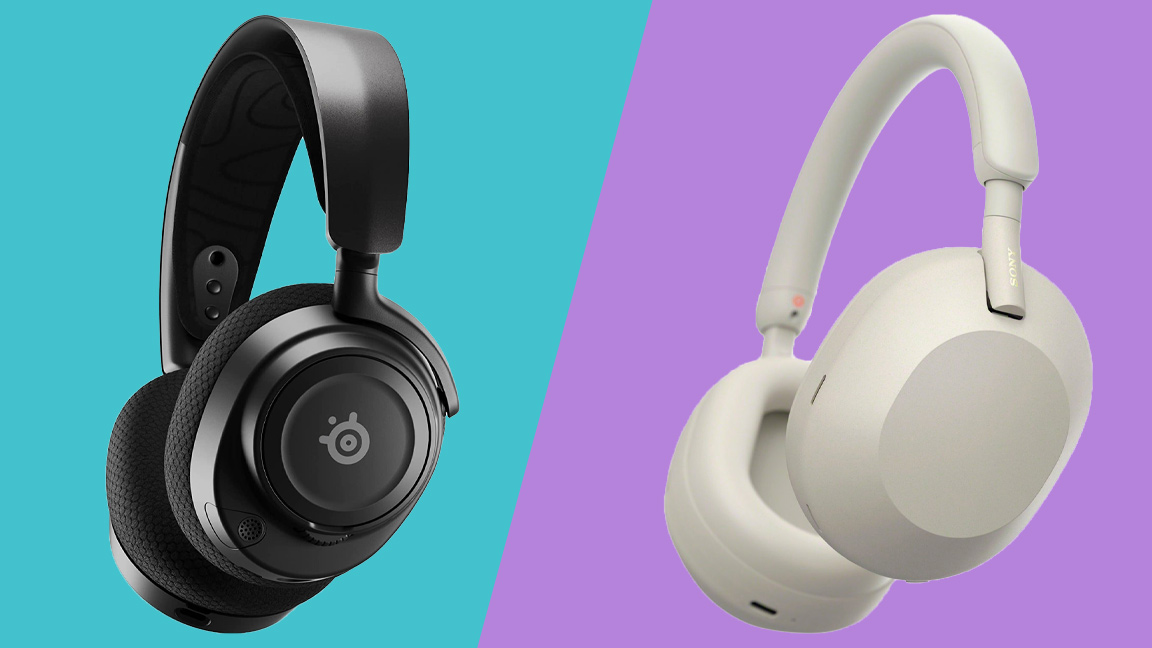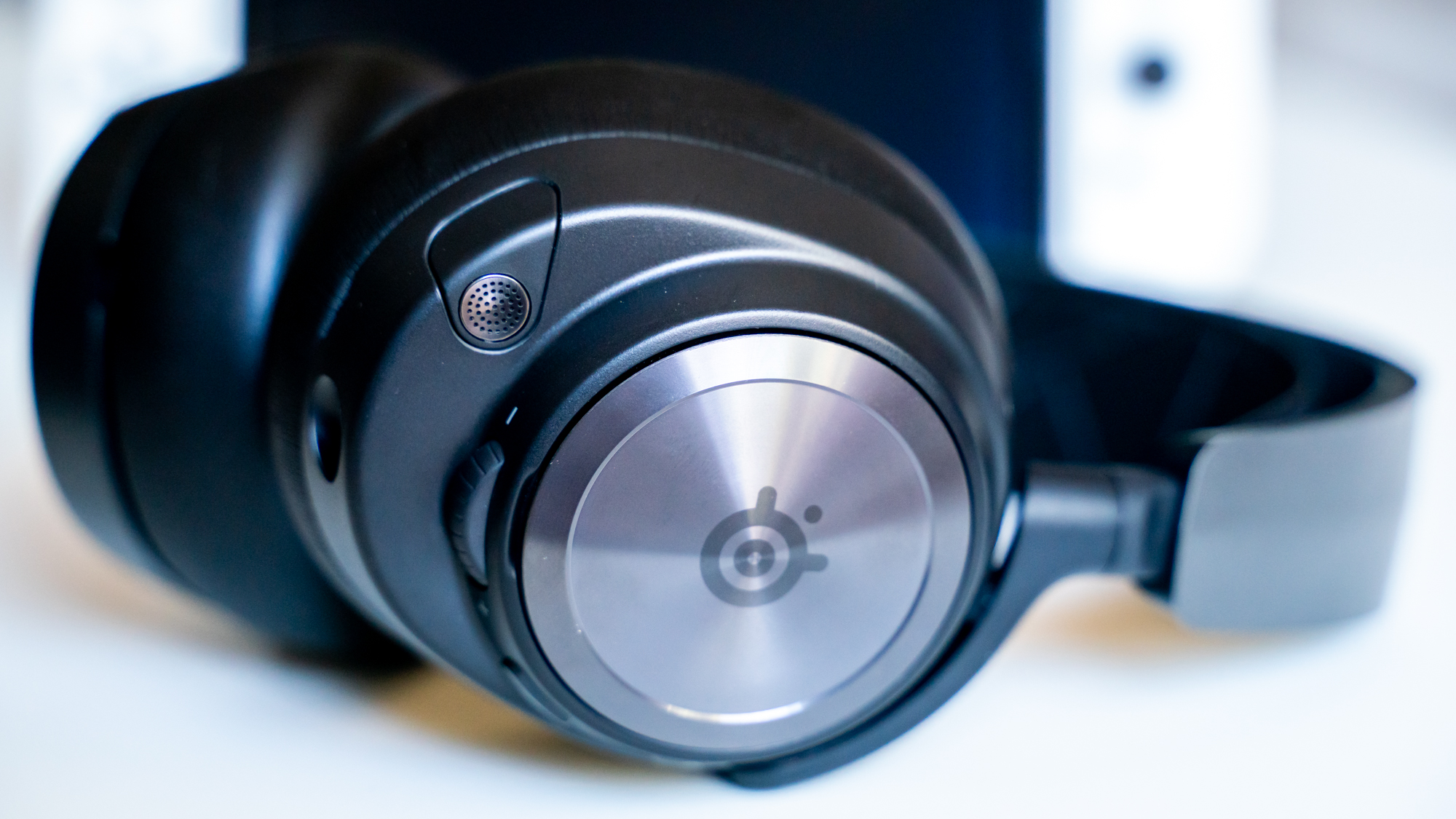Gaming headsets vs headphones: which is best for gaming?
The debate between gaming headsets and headphones rages on

Don’t listen to the naysayers of yesteryear. The debate over gaming headsets versus headphones is far from settled, especially with the huge strides peripheral manufacturers and established audio companies have made toward creating options for your gaming needs.
Traditionally, these all-in-one headsets consisted of a pair of headphones with a built-in mic, usually mounted on an extended arm. Meanwhile, traditional headphones were purely listening devices that did only one thing, reproduce audio. That line has blurred.
Headphones like the Bose QuietComfort 700 and Sony WH-1000XM4 have hidden beamforming mics for taking calls. Likewise, some headsets, such as the Asus ROG Delta S Wireless, skip the boom mic and use the same type of built-in mics to cover users’ online gaming needs. The Logitech G Astro A30 even has both.
However, you won’t find a pair of headphones with a boom mic, and most of the models that gamers gravitate toward as alternatives to gaming headsets are wired models with no mic at all. And, though a few headsets skip the boom mic like the Asus mentioned above, those models are few and far between. Additionally, headset features generally aren’t usually available with headphones.
There’s a chance you might get better performance with a headphone and mic setup. But, gaming headsets have improved so much in quality over the last few years that they’re often just as good and just as worthy of your hard-earned cash. Plus, they’re more convenient than the headphones and mic combo.
Gaming headsets vs headphones: features
- External mic required for headphones
- Gaming headsets are better at wireless listening
- Most headphones don’t come with any apps
Before comparing these two types of devices, be aware that wireless headphones are not gaming-worthy. Their Bluetooth connectivity will introduce lag into your audio signal – something you want to avoid no matter the title you’re playing. That means you can only use their wired connectivity. And, since the built-in mics only work in Bluetooth mode, you’ll also have to spring for a USB mic.
As any potential headphones you would use has to be wired, you’ll need to consider if you’re ok being tethered to your PC or console. On the other hand, a wide range of wireless gaming headsets are latency-free, thanks to their 2.4GHz wireless connectivity.
With wired headphones, you’ll also need an external mic as well as the ports and desk space necessary for the larger setup. A headset, being an all-in-one device, takes up less space, uses only a single port, and will help you cut costs in the long run.
Features are another area where the two diverge. Gaming headsets usually have an app that lets you fuss around with the volume and mic levels, add post-processing to either, and make profiles for different situations (or even games). Though they also often come with some kind of surround sound functionality, you can use that feature with any pair of headphones thanks to universal apps like Windows Sonic and Dolby Atmos. With headphones, however, you’re limited to using third-party apps not just for that virtual surround sound but also for adjusting EQ and most other adjustments. If you’re using a USB mic, some have apps to fine-tune controls but many do not.

Gaming headsets vs headphones: performance
- Expensive headphones have the best sound
- Headsets can sound as good as most headphones
- An external mic will sound better than a headset’s
The most intense part of the gaming headset vs headphones debate has been over audio quality.
While you can find significantly more expensive headphones out there and audiophiles will likely prefer using a pricier pair from their collection over the latest from Razer, Corsair, or Steelseries, there are plenty of gaming headsets that deliver stellar audio performance. I’ve personally tested many that not only let me hear every nuance in all sorts of games but are also enjoyable to use with music and movies.
While you don’t have to go broke getting good sound – consider something like the Corsair HS80 RGB USB – some more expensive options like the Steelseries Arctis Nova Pro and the Audeze Penrose X get into hi-res audio territory. These can rival audiophile options in terms of their frequency range for a clear, detailed and immersive sonic experience.
When it comes to mic performance, headsets are truly devices of convenience. The built-in boom mics will vary in quality from model to model but will sound better than the beamforming mics found on wireless headphones. That’s because those mics are tucked away in the ear cups and use post-processing to isolate your voice. But, when the mic is on a boom arm, it can be situated right in front of or next to your mouth so that your voice is clear and immediate instead of sounding like it’s far away.
Of course, you could invest in a USB mic instead as many of those who prefer using headphones do. They have a wider frequency range of 20-20kHz (most boom mics are 100-10kHz) for better vocal reproduction. However, they’re also prone to picking up vibrations and bumps so going the a la carte route also means possibly investing in an external boom arm. Not only is that going to be more expensive, but it takes up a lot more space.
A case for gaming headsets
- Headphone and mic combo is bulky but sounds the best
- Headsets are more convenient and still sound great
If you want the best possible results and don’t care about expense or how complicated your setup is, using a pair of headphones like the Drop X Sennheiser HD6XX with a USB mic like the Blue Yeti will meet or beat just about any gaming headset out there.
However, getting a high-end gaming headset will get you very, very close while saving some money and desk space, and simplifying your setup. Plus, you can go wireless if you prefer an even cleaner, more minimalist one. That’s something you can’t do with regular headphones unless you’re willing to introduce some lag into your audio, which could be the difference in how well you play.
Get daily insight, inspiration and deals in your inbox
Sign up for breaking news, reviews, opinion, top tech deals, and more.

Michelle Rae Uy is the former Computing Reviews and Buying Guides Editor at TechRadar. She's a Los Angeles-based tech, travel and lifestyle writer covering a wide range of topics, from computing to the latest in green commutes to the best hiking trails. She's an ambivert who enjoys communing with nature and traveling for months at a time just as much as watching movies and playing sim games at home. That also means that she has a lot more avenues to explore in terms of understanding how tech can improve the different aspects of our lives.